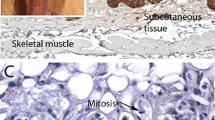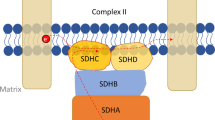Abstract.
Transplantable tumors and cell lines have been developed from pheochromocytomas arising in mice with a heterozygous knockout mutation of the neurofibromatosis gene, Nf1. Nf1 encodes a ras-GTPase-activating protein, neurofibromin, and mouse pheochromocytoma (MPC) cells in primary cultures typically show extensive spontaneous neuronal differentiation that may result from the loss of the remaining wild-type allele and defective regulation of ras signaling. However, all MPC cell lines express neurofibromin, suggesting that preservation of the wild-type allele may be required to permit the propagation of MPC cells in vitro. MPC lines differ from PC12 cells in that they express both endogenous phenylethanolamine N-methyltransferase (PNMT) and full-length PNMT reporter constructs. PNMT expression is increased by dexamethasone and by cell-cell contact in suspension cultures. Mouse pheochromocytomas are a new tool for studying genes and signaling pathways that regulate cell growth and differentiation in adrenal medullary neoplasms and are a unique model for studying the regulation of PNMT expression.
Similar content being viewed by others
Author information
Authors and Affiliations
Additional information
Electronic Publication
Rights and permissions
About this article
Cite this article
Powers, J., Evinger, M., Tsokas, P. et al. Pheochromocytoma cell lines from heterozygous neurofibromatosis knockout mice. Cell Tissue Res 302, 309–320 (2000). https://doi.org/10.1007/s004410000290
Received:
Accepted:
Issue Date:
DOI: https://doi.org/10.1007/s004410000290




